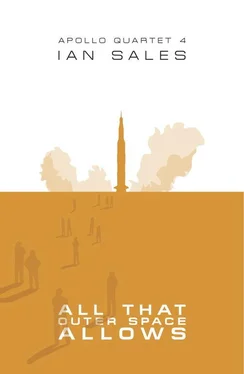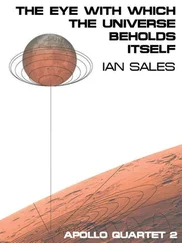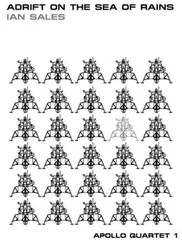Something is unlocked, released, but she never figures out what. They fall onto the bed, feverishly undressing, he strips out of his flight suit, leaving it depending from his booted feet like a pale shadow, she sheds dress, shoes, pantyhose, panties and bra…
Sex: the response to so many marital problems, but so rarely a solution.
#
“It was upon the waterfront that I first met her, in one of the shabby little tea shops frequented by able sailoresses of the poorer type.”
‘Friend Island’, Francis Stevens (1918)
“Margaret reached over to the other side of the bed where Hank should have been.”
‘That Only a Mother’, Judith Merril (1948)
“What a great day it was for everyone, when David came home from deep space.”
‘The Woman from Altair’, Leigh Brackett (1951)
“Ann Crothers looked at the clock and frowned and turned the fire lower under the bacon.”
‘Created He Them’, Alice Eleanor Jones (1955)
“It was an old house not far from the coast, and had descended generation by generation to the women of the Putnam family.”
‘The Putnam Tradition’, Sonya Dorman (1963)
“Here I am, a silver-haired maiden lady of thirty-five, a feeder of stray cats, a window-ledge gardener, well on my way to the African Violet and antimacassar stage.”
‘The Warlord of Saturn’s Moons’, Eleanor Arnason (1974)
“It is impossible to call up the Devil when women are present, I mean real women, that is to say hermaphrodites, for men (real men, who exist) are the people who look at the women, and the women are therefore the people who are looked at by the men.”
‘Existence’, Joanna Russ (1975)
#
The Vehicle Assembly Building is 526 feet tall, so tall in fact, their guide tells Ginny and Walden, that clouds sometimes form inside. It’s the largest building in Florida, and the largest single-storey building in the world. Ginny has never visited New York, she has not seen the Empire State Building, the tallest building in the world and nearly three times taller—so she cannot help gawking like a rube as she gazes upward in one of the VAB’s empty high bays. She puts a hand on the crown of her hard hat to hold it in place as she cranes her neck, and her eyes travel up endless beams and girders and decks, an Escher-like maze, it’s like a forge or a warehouse turned on its end.
A hand grips her arm, and she abruptly returns to earth. The hand belongs to her husband, but the expectant, and amused, gaze on her is their guide’s. He gestures for them to follow, and crosses into another of the high bays—but there is something blocking the view and it’s only as Ginny enters the bay she sees it’s a crawler-transporter tread, and it must be twice her height. The crawler-transporter itself is the size of a large building, like a faculty block from a university campus, and it can move .
But then Ginny looks up and she sees white and black, a vast tapering cylinder painted in those colours, stretching up to the roof and seemingly held upright by a tower of red girders. The Saturn V stack is so much bigger than she imagined. She knows it is 363 feet tall, but that’s just a number, and like many readers and writers of science fiction she has seen so many numbers so much larger—millions of miles! thousands of years! hundreds of light-years! She has become almost immune to scale, blasé about immensity. But this, it takes her breath away, and she finds it hard to credit three men will be perched atop this rocket and it will carry them to the Moon. She feels humbled, as if the immense physical presence of the crawler-transporter and Saturn V has levered open her imagination and created a gaping void to be filled.
Apollo 12, says the engineer, they finished putting it together only two days ago.
When will it launch? asks Ginny.
There’s still weeks of tests yet, the engineer adds. It’s all automated, but we won’t be ready to roll out to the pad for more than a month.
There is an unintended irony here. I have never visited the John F Kennedy Space Center, nor the Lyndon B Johnson Space Center (as the Manned Spacecraft Center is now known), I have never stood beside a Saturn V. I can only imagine its size, its sheer physicality. And yet, here I am, attempting to describe it in such a way that its overwhelming proportions impact my fictional character’s imagination. There are those who consider science fiction an essentially ironic genre, and the universe is indeed indifferent to the plight of humans—but in many science fiction stories, the very fate of the universe is dependent upon a person’s actions. In order to tell stories which will appeal to readers, writers must put people at the centre, and give them the power to change their world. It is almost axiomatic.
Yet here is Virginia Grace Eckhardt, who has no such power. She has power only over the fictional worlds she creates on her typewriter. There is irony. And there is more irony still—
Imagining an entirely female astronaut corps, given that, at the time Ginny is being shown around the VAB in early July 1969, only one woman, Valentina Tereshkova, has been into space.
Positing a history of science fiction in which the genre is dominated by women, in which it is considered women’s fiction.
One of the strengths of science fiction is its capacity to literalise metaphors. The 526 foot tall Vehicle Assembly Building, the Apollo 12 stack on the crawler-transporter in one of its high bays, both could be considered literal representations of the irony which underlies the narrative of All That Outer Space Allows .
The view from the roof of the VAB is astonishing, even though there’s little to see: low scrub, inlets and basins, to the east the blurred grey carpet of the Atlantic Ocean. And, of course, the two launch pads—a wide causeway stretches from the VAB to each of them, along which the crawler-transporter will carry its Saturn V stack.
A cool sea breeze blows across the top of the VAB, and Ginny feels it press the thin material of her dress against her back. There’s a photographer from the NASA press office standing several feet away, so Ginny smiles and grips Walden’s hand tighter and hopes she doesn’t look too foolish in the hard hat. The photographer tells them he’s finished, Walden releases her hand and marches across to have a word with the man. Ginny turns about, puts a hand up to the NASA pass clipped to her dress and plays idly with it as she gazes out at launch pads 39A and 39B. At some point in the next year or two, her husband may well find himself lying on his back in a command module atop 6 million pounds of fuel—kerosene and liquid oxygen; and liquid hydrogen and liquid oxygen—which will burn producing 8.5 million pounds of thrust and all to throw around 45 tons into orbit about the Earth in eleven and a half minutes.
She wonders what it might feel like to sit atop a Saturn V mated to one of those giant red gantries at the launch pad, clad in a space suit, the battleship grey instrument panel above her… She hugs her torso and shivers. This is what she has been writing about, but now having witnessed the colossal size of the Saturn V, she wonders if she can truly capture the sensation of flying in it. Science fiction seems such an imperfect tool, too dependent upon well-worn tropes and conventions so long established they’re usually left unexplained.
If only Ginny could apply to be an astronaut herself! But women are not allowed. Women are perfectly capable of being astronauts, of that much she is convinced—and an all-female astronaut corps would do the job just as well as an all-male one, if not better. Perhaps there’s a story in there somewhere, a history of the US space program, but with female astronauts—
Walden is at her side. He’ll send us copies, he says. Have you seen enough, hon?
Читать дальше












